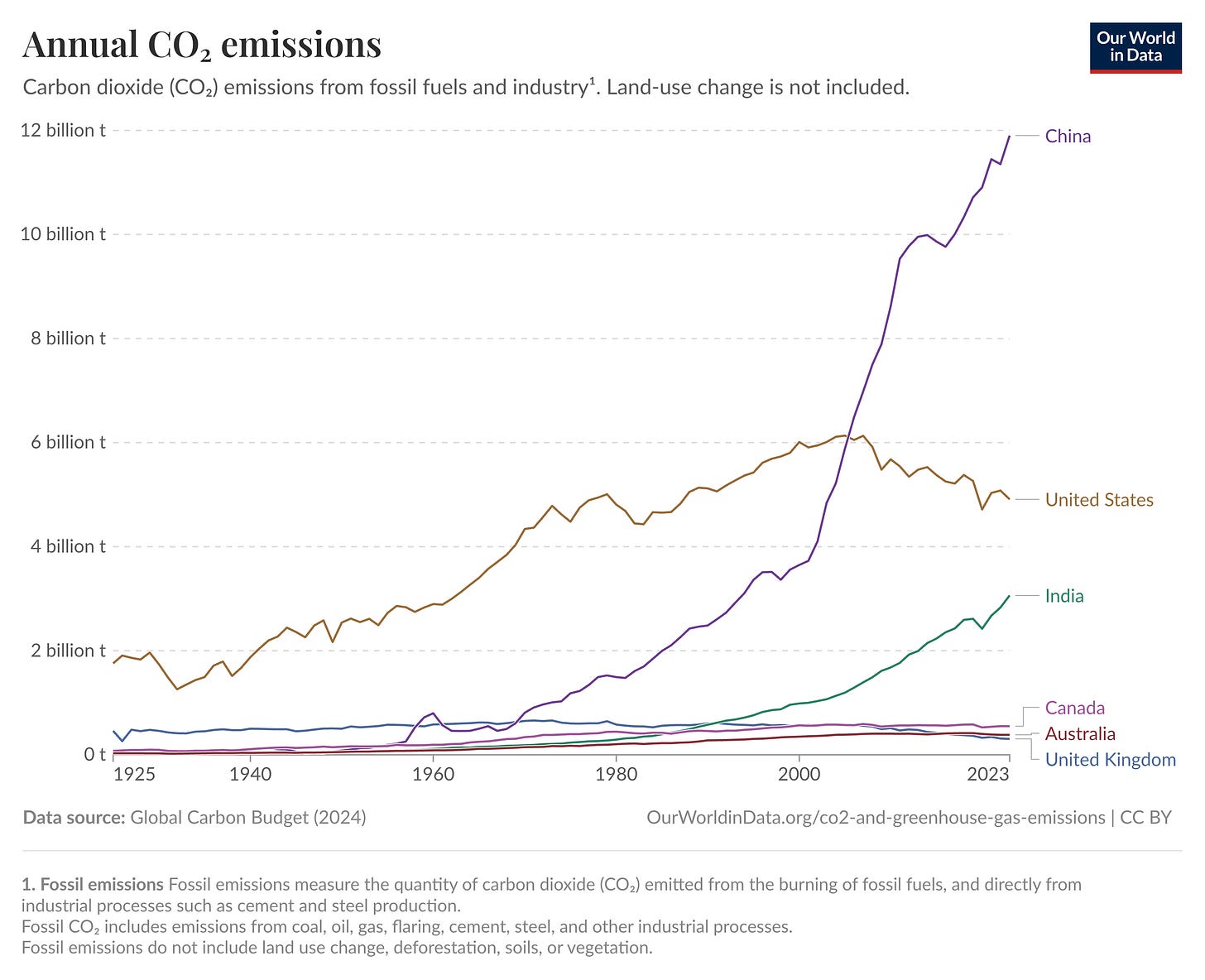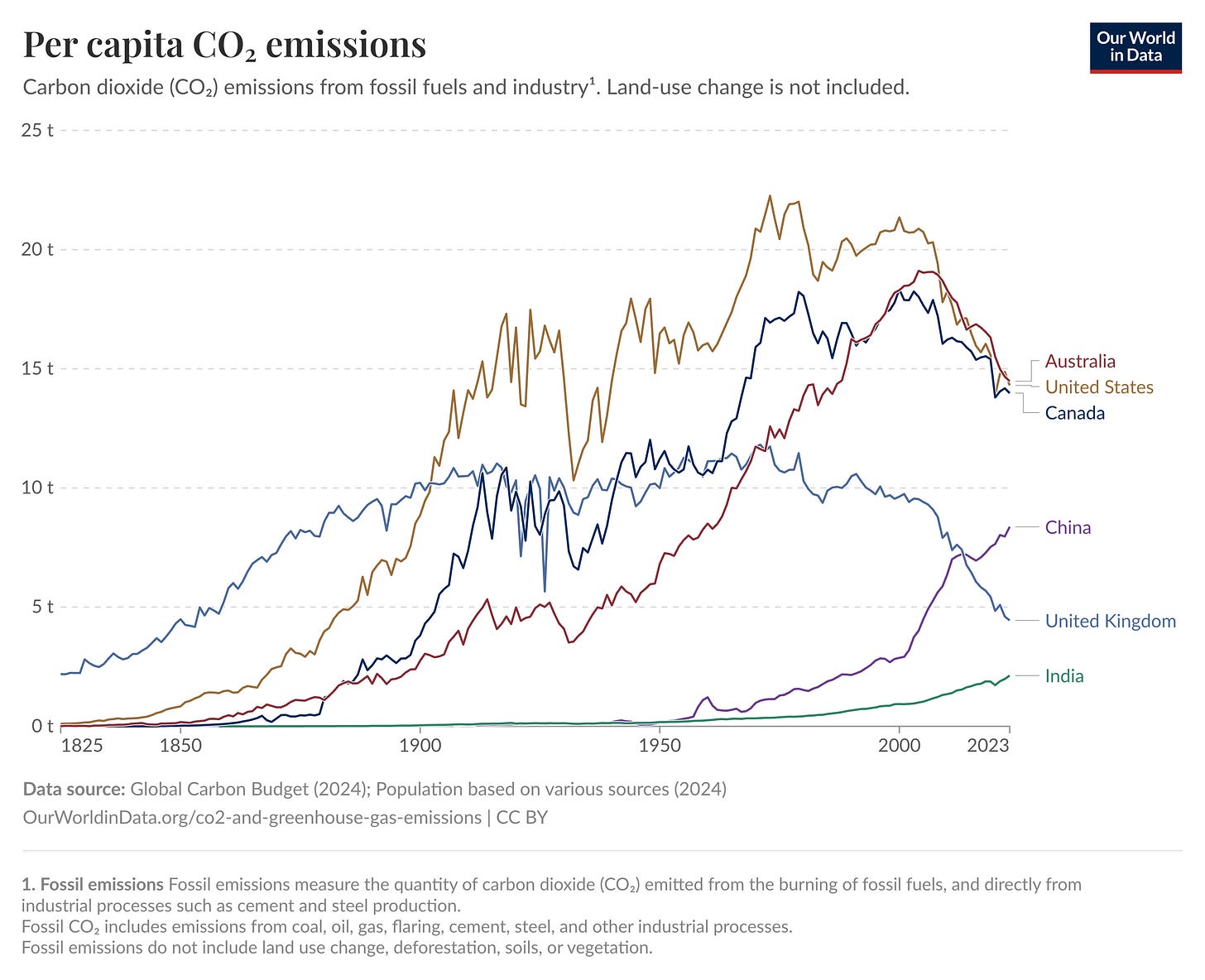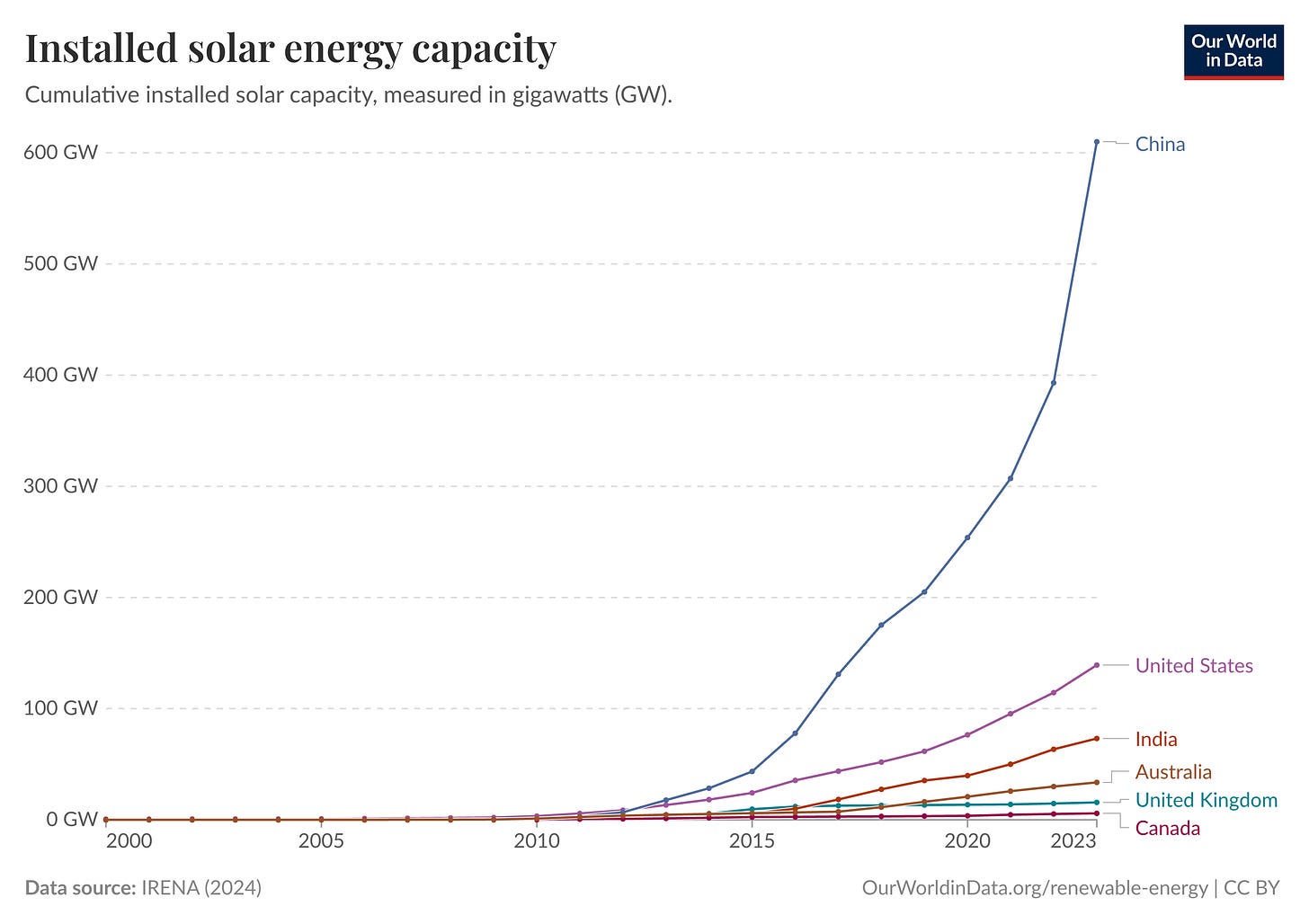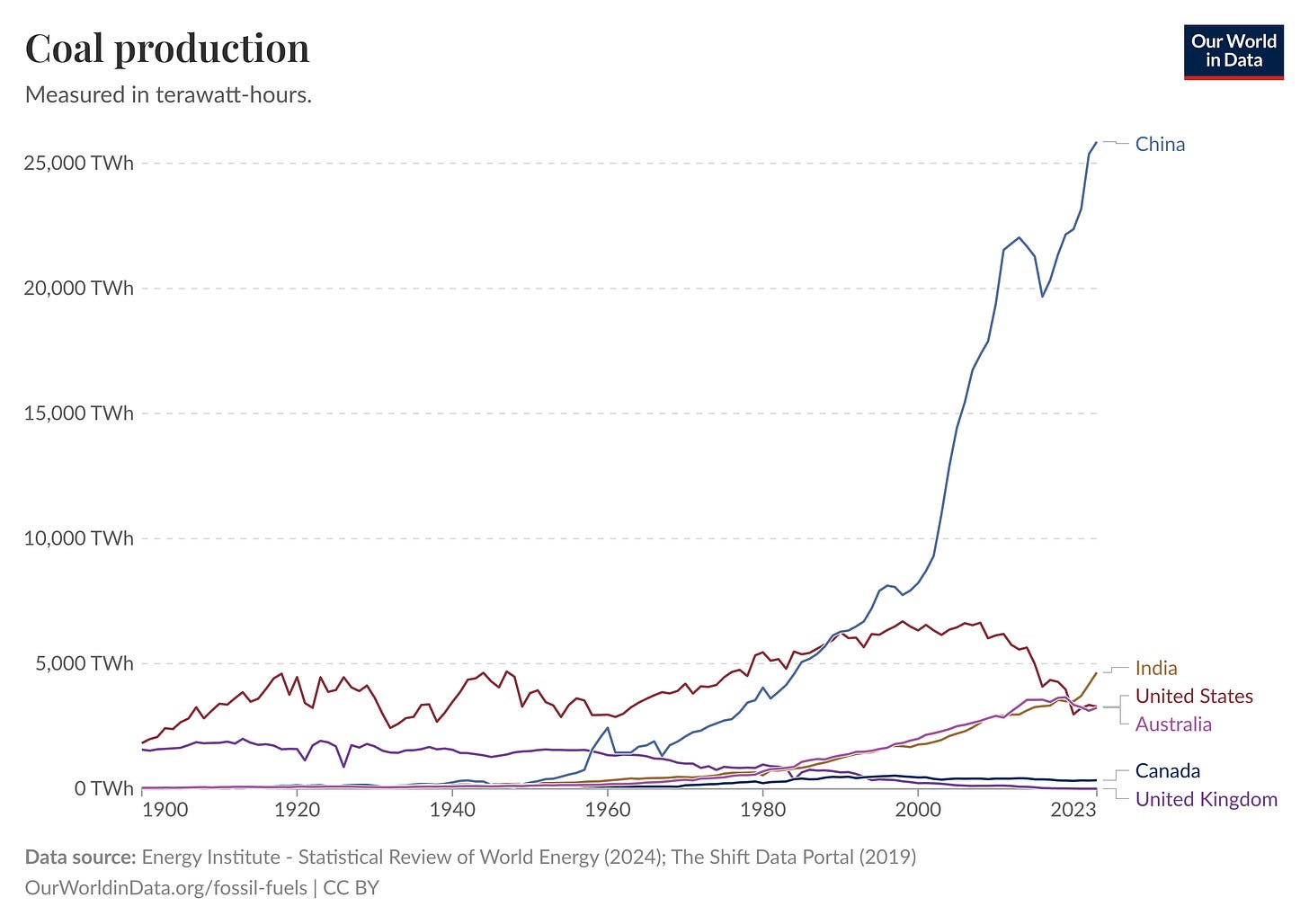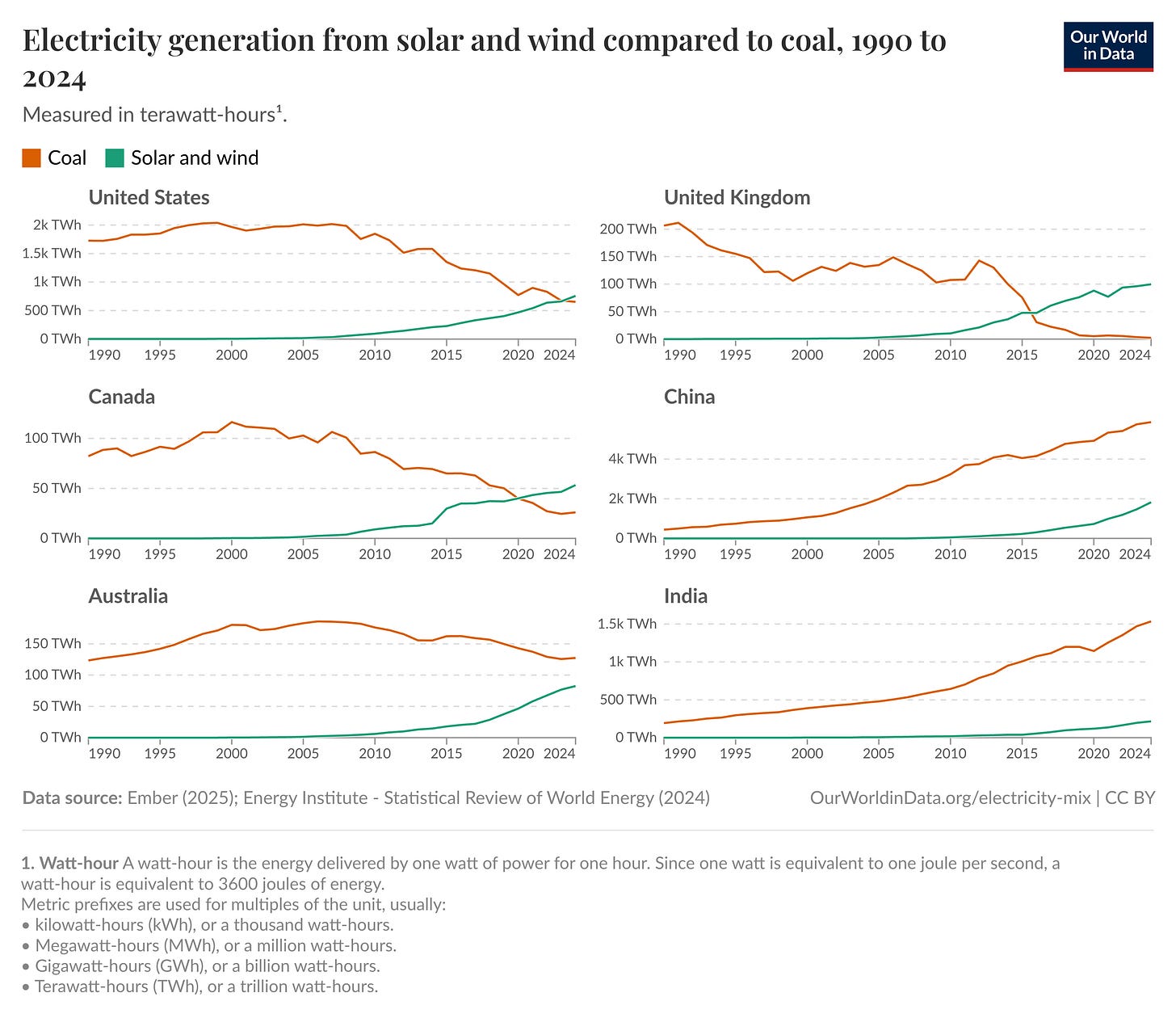Per capita matters
Judge emissions with caution
Why bother?
“What’s the point in us even trying to reduce emissions?”
The argument is as familiar as it is seductive. Why should we impose costs on ourselves, regulate our industries and potentially hobble our economies, when China’s emissions dwarf everyone else’s?
Since the early 1970’s, China’s emissions have escalated quickly. Bypassing the US in the mid-2000’s, China’s emissions of around 12 billion tonnes annually are now a clear outlier.
By contrast, largely thanks to Paris agreement commitments, U.S. emissions have generally trended downward since 2007 albeit with significant fluctuations (financial crisis, COVID, etc.).
The most recent data suggests US emissions are 5.6 billion tons of CO₂. This roughly 24% below 2005 baseline levels under the Paris Agreement targets.
So while other countries are flatlining or reducing emissions, China is racing away producing more CO2 than ever… right?
The right tool for the job
China's emissions aren't all that high on a per capita level. On average, a Chinese citizen emits roughly 8.5 tonnes of CO₂ annually. That is on par with Europeans and well below Americans, Canadians, and Australians who emit more than 14 tonnes per person.
The emergence of the Chinese middle class in the past 30 years is nothing short of an economic miracle. Hundreds of millions have been lifted out of poverty. World class health services and education became almost ubiquitous in a single generation.
This development has allowed China to become a research powerhouse, exporting IP (through licensing or market adoption) globally.
Further, China is taking significant climate action right now, even though you can't see it in the chart:
It is the world's largest investor in renewables.
It produces the vast majority of the world's solar panels and dominates global battery manufacturing.
It is home to the largest and fastest-growing electric vehicle market on earth.
It has committed to peak emissions before 2030 and to reach carbon neutrality by 2060.
In fact, Chinese solar energy capacity took off during the pandemic and hasn’t stopped. In 2023 alone China installed 200GW of solar. That’s more than the total solar capacity of the United States at the time.
But… coal?
The naysayers at this point usually point out that China has been on a coal rampage for the past 20 years. This is true, and consistent with the widely documented global narrative for economic development.
For most developing economies, coal begins as the energy source of choice. It is cheap, widely available, and well-suited to the demands of baseload power generation. These qualities make it particularly attractive to governments focused on rapid industrialisation and energy security.
Only as countries grow richer do they typically acquire the fiscal space, institutional capacity, and technological expertise required to scale up (and firm-up) cleaner alternatives such as solar and wind.
These low-carbon sources, while increasingly competitive, still demand substantial upfront investment and in a functional and reliable energy grid - luxuries often beyond the reach of lower-income nations.
The narrative of ‘burn coal first, then transition to cleaner sources later’ becomes even more obvious when we add in some time series comparisons with developed economies.
Notice how in the chart below China and India have similar shaped curves?
So it’s true a huge component of global emissions come from coal consumption in China. Again, this is an expected part of the development narrative.
And yet, things are changing quickly.
The latest estimates for 2024 have China adding another 280GW of solar to the grid (roughly 30% year on year growth). There was another 80GW of wind power added on top of this.
And for coal? China added only around 40 GW of new coal power capacity in 2024. In fact, approvals for new coal projects dropped significantly: just 10.3 GW approved in H1 2024 (a nearly 80% decrease from H1 2023).
So, where does that leave us?
Here's a better way to think about the problem
The worst (but probably most common rebuttal) to the question of “what’s the point in us even trying to reduce emissions compared to China?” is that “well every bit counts”.
While that answer is technically true, it misses the point that the question itself is wrong. China emits around 30 per cent of global emissions. For this they provide energy for about 18 per cent of the global population.
On a per capita level, this is a great deal compared to almost all developed economies. What’s more, the unprecedented renewables installation rate in China is making the deal even better year on year - for China, and everyone else.
Using China's currently high* emissions as a reason for inaction in the UK or Australia:
Is fundamentally ignorant of the standard economic development narrative
Ignores basic moral and geopolitical leadership in driving global momentum through collective agreements
Misses the economic opportunity for advanced economies to install increasingly cheap renewable power into fully functional energy grids
So instead of asking "what's the point of changing anything here at home?", perhaps the better question is: “how on earth are we going to keep up?”.


